Soft Fluffy French Bread Recipe: The Only Recipe You’ll Ever Need
If you’re craving that perfect loaf of soft, fluffy French bread, the kind with a golden crust and pillowy inside, you’ve just found your new favorite recipe. Whether you’re making sandwiches, garlic bread, or simply want to enjoy a warm slice with butter, this soft fluffy French bread recipe is easy enough for beginners and delivers bakery-quality results at home.
In this guide, you’ll find a step-by-step tutorial, helpful baking tips, variations, and answers to common questions—everything you need to make the best French bread ever.
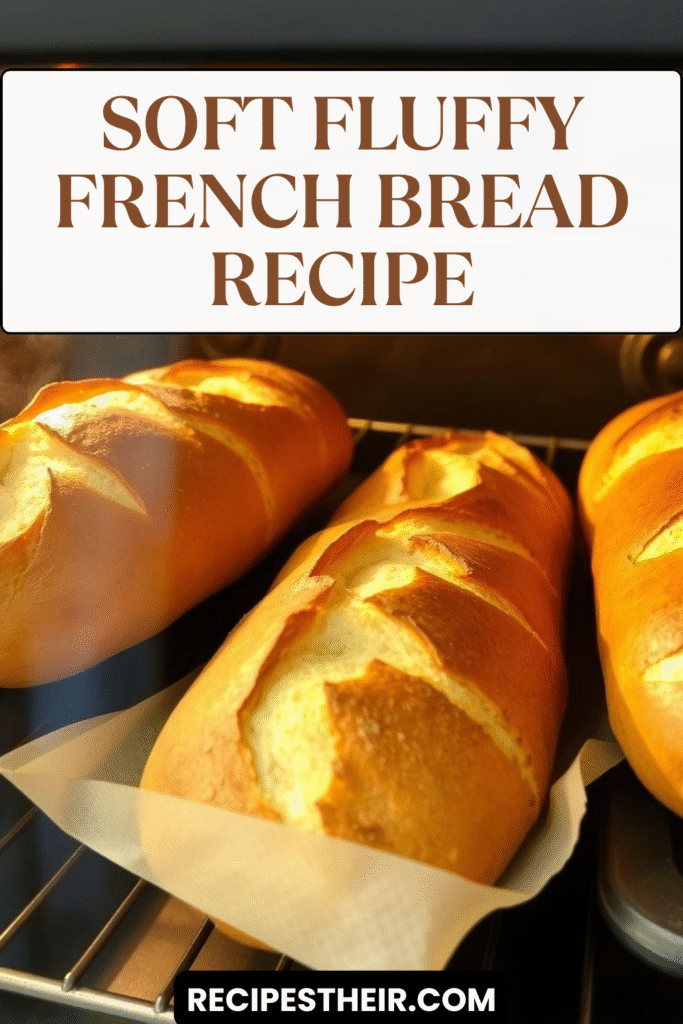
Why You’ll Love This Soft Fluffy French Bread Recipe

French bread often gets a reputation for being rustic and crusty, but this version is soft, tender, and incredibly airy. Here’s what makes this recipe special:
- Super soft interior – Perfect for sandwiches or dipping.
- Golden brown crust – Just enough crunch without being tough.
- No fancy tools required – Just your hands or a stand mixer.
- Beginner-friendly – Easy steps with plenty of tips.
Ingredients You’ll Need
This recipe uses pantry staples and makes two generous loaves:
- 2 ¼ teaspoons (1 packet) active dry yeast
- 2 ½ cups warm water (about 110°F/45°C)
- 2 tablespoons granulated sugar
- 1 tablespoon salt
- 2 tablespoons vegetable oil or melted butter
- 6 to 6 ½ cups all-purpose flour (plus extra for kneading)
- Optional: 1 egg white + 1 tbsp water (for egg wash)
Step-by-Step Instructions
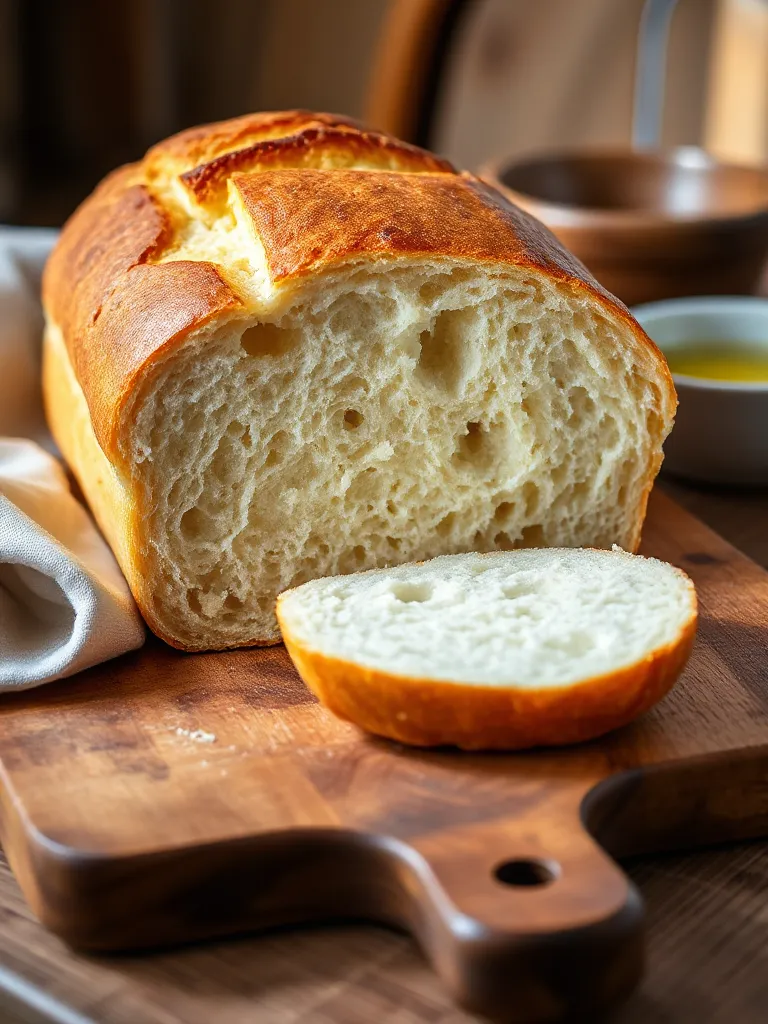
Step 1: Activate the Yeast
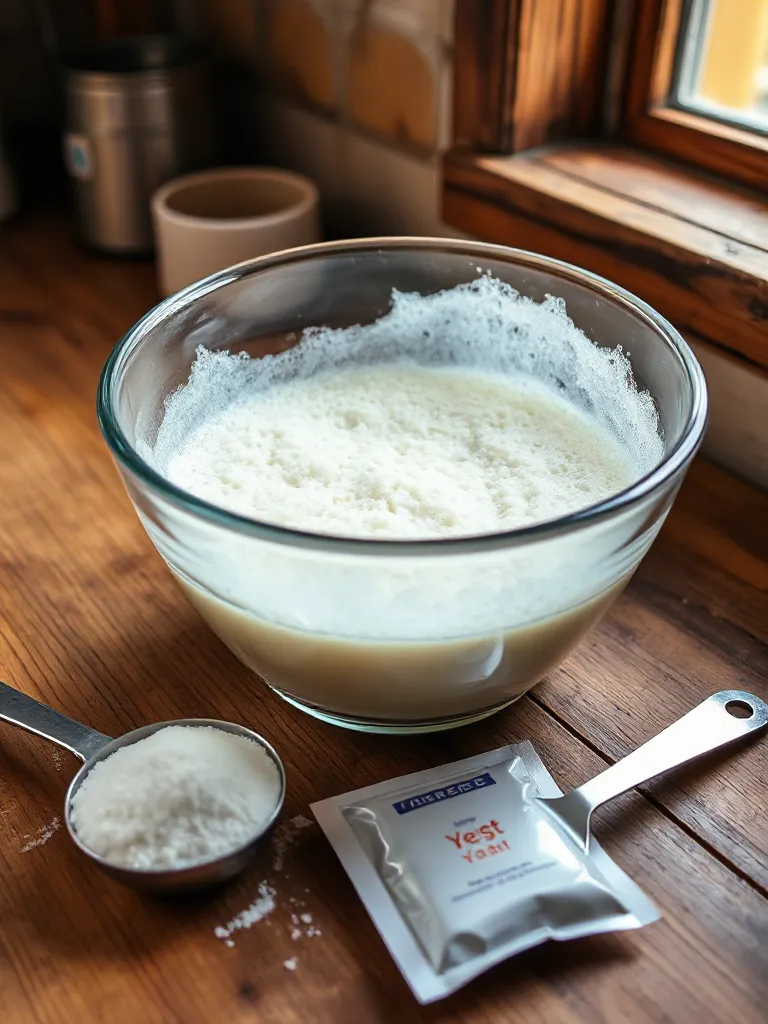
In a large mixing bowl, combine the warm water, sugar, and yeast. Let it sit for 5–10 minutes until frothy. This step ensures your yeast is active and ready to rise.
Tip: If the mixture doesn’t bubble, your yeast may be expired. Start over with fresh yeast.
Step 2: Mix the Dough
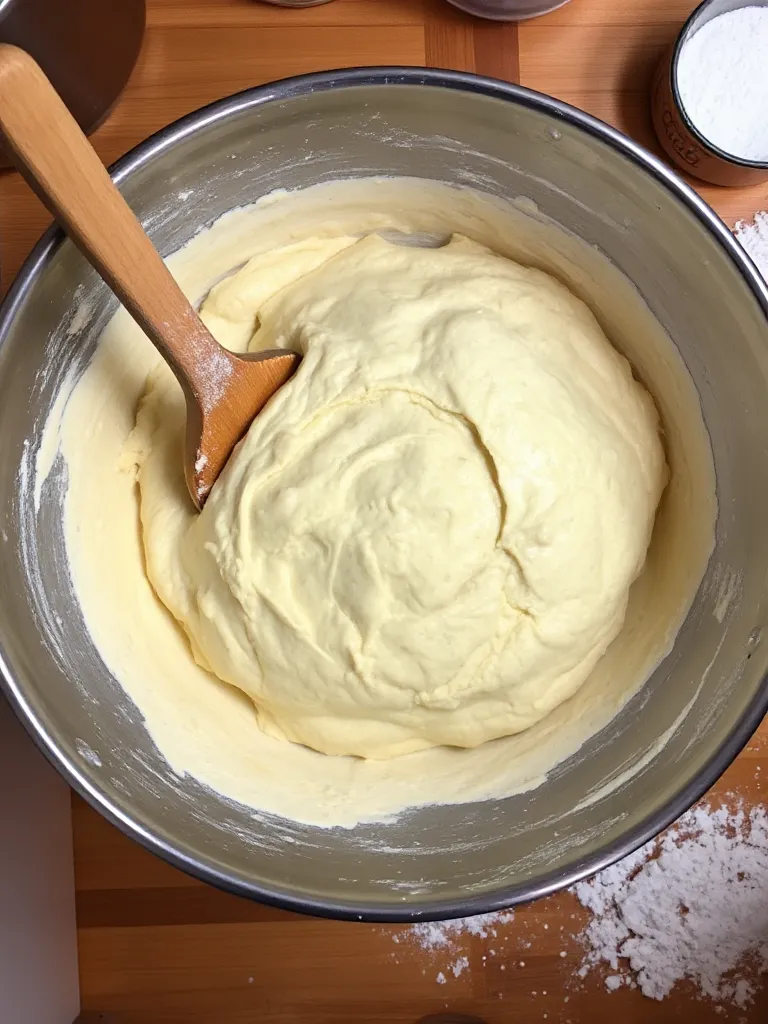
Add the salt, oil, and 3 cups of flour to the yeast mixture. Stir until combined. Slowly add the remaining flour, ½ cup at a time, until a soft dough forms. It should be slightly sticky but manageable.
Step 3: Knead the Dough
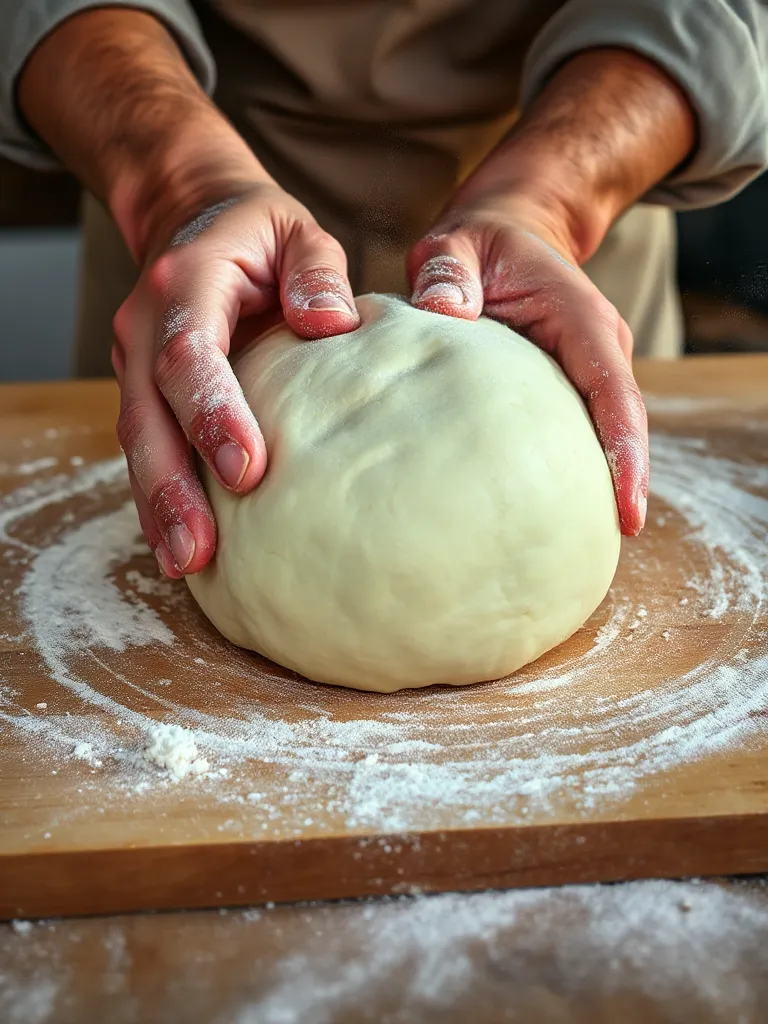
Turn the dough onto a lightly floured surface. Knead for about 8–10 minutes (or 5 minutes in a stand mixer with a dough hook) until smooth and elastic.
What to look for? The dough should spring back when you press it with a finger.
Step 4: First Rise
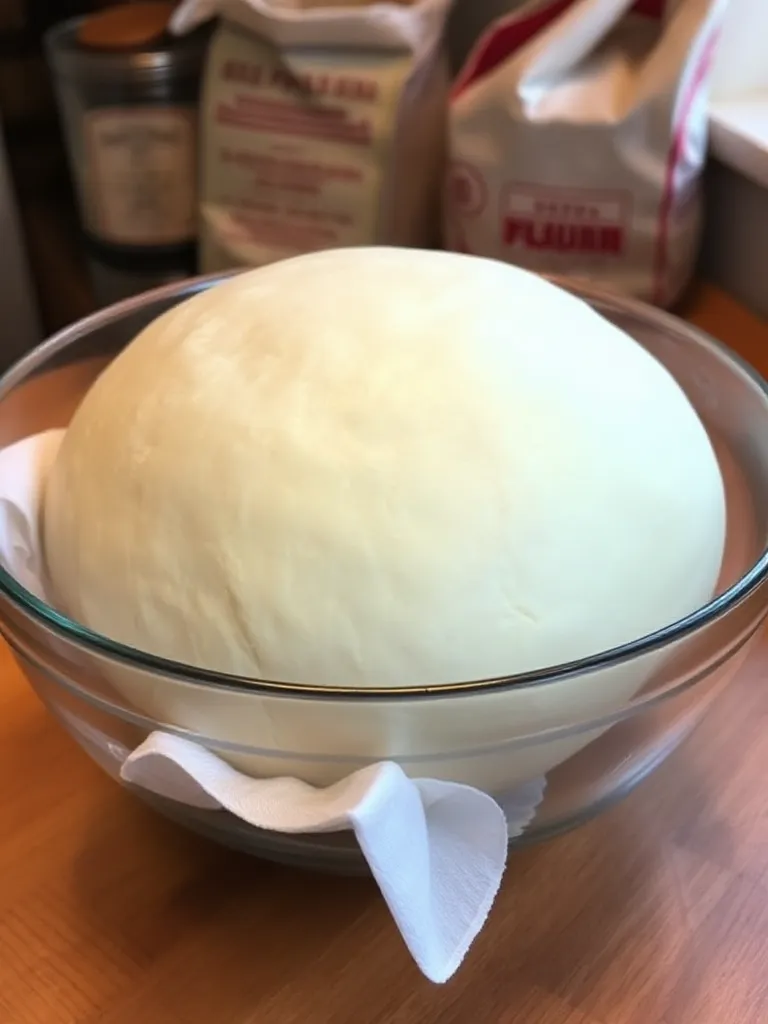
Place the dough in a lightly oiled bowl, turning it once to coat. Cover with a clean kitchen towel or plastic wrap. Let it rise in a warm spot for 1 to 1.5 hours, or until doubled in size.
Step 5: Shape the Loaves

Punch down the risen dough and divide it into two equal pieces. Roll each piece into a rectangle, then tightly roll up like a jelly roll, pinching the seams to seal. Place each loaf on a greased baking sheet or parchment-lined pan.
Optional: Score the top with a sharp knife or razor blade for a classic French bread look.
Step 6: Second Rise
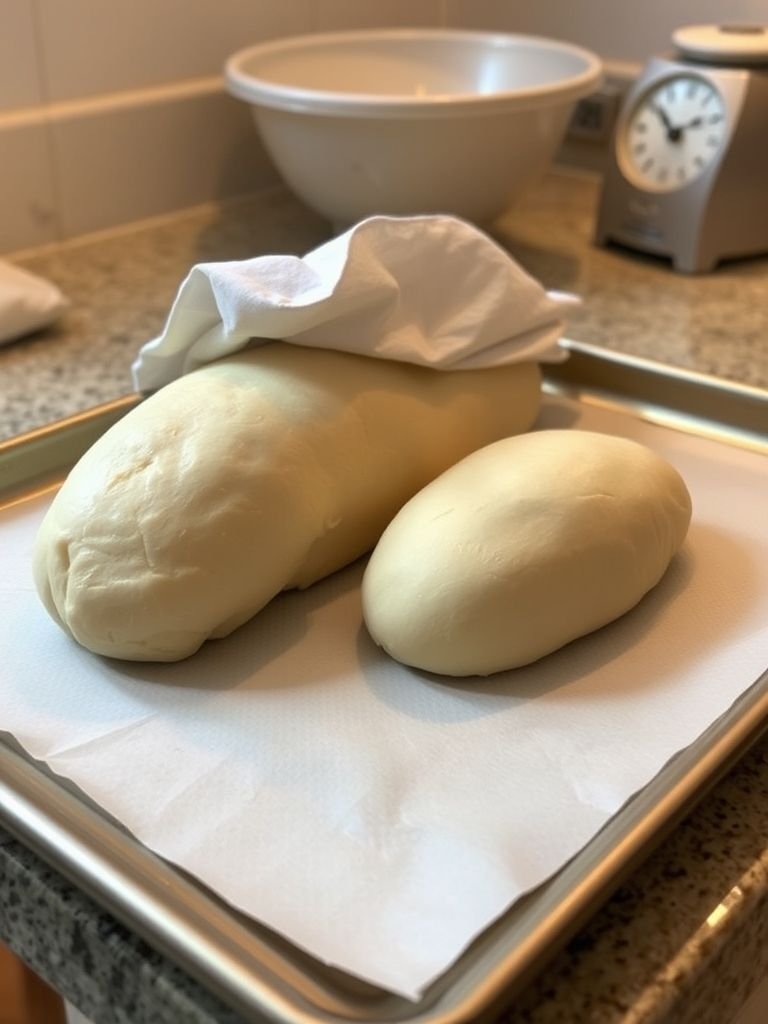
Cover the shaped loaves loosely with a towel and let them rise again for 30–45 minutes, or until puffed and nearly doubled.
Step 7: Preheat the Oven
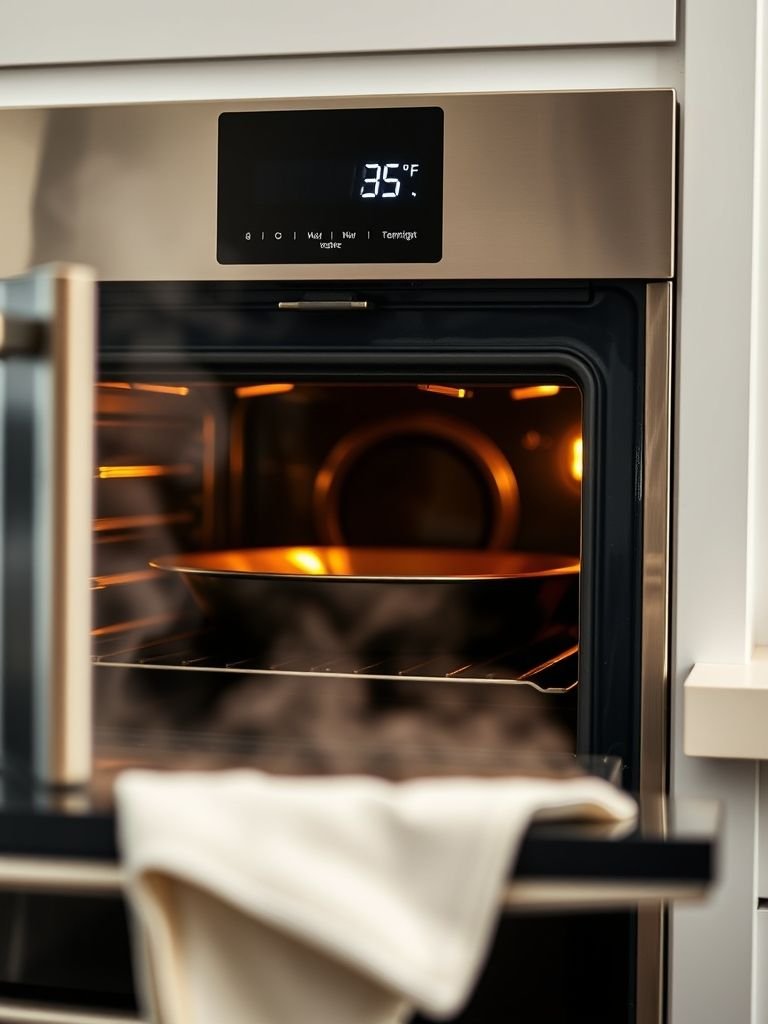
Preheat your oven to 375°F (190°C). Place a small oven-safe pan of water on the bottom rack to create steam—this helps develop a soft, slightly chewy crust.
Step 8: Bake the Bread

Brush the loaves with the optional egg wash for a shiny, golden crust. Bake for 25–30 minutes, or until the bread is golden brown and sounds hollow when tapped on the bottom.
Step 9: Cool Before Slicing

Let the bread cool on a wire rack for at least 20 minutes before slicing. This helps the interior finish setting and keeps it fluffy.
Storage Tips
- Room temperature: Store in a bread box or airtight bag for up to 3 days.
- Freezing: Slice and wrap tightly. Freeze for up to 3 months.
- Reheating: Warm slices in the oven or toaster for fresh-from-the-oven taste.
Serving Ideas
This soft fluffy French bread is a versatile base for so many meals and snacks:
- Slather with garlic butter and broil for homemade garlic bread.
- Use it for hearty sandwiches or paninis.
- Serve alongside soups and stews.
- Toast slices and top with eggs, avocado, or jam.
Variations You Can Try
Want to customize your French bread? Try these delicious twists:
- Cheesy French Bread: Sprinkle shredded mozzarella or parmesan inside before rolling.
- Herb Bread: Add 2 teaspoons of dried herbs (like rosemary, oregano, or Italian seasoning) to the flour mixture.
- Whole Wheat French Bread: Replace up to 2 cups of all-purpose flour with whole wheat flour.
Troubleshooting: Soft Fluffy French Bread Recipe FAQs
Why isn’t my French bread fluffy?
If your bread is dense or flat, the dough may have been under-kneaded, the yeast may have been inactive, or the rise time may have been too short. Be sure to give the dough enough time to double in size and use fresh yeast.
How do I get a soft crust?
The steam in the oven helps soften the crust. You can also brush the loaves with melted butter right after baking for extra softness.
Can I make this recipe with instant yeast?
Yes! Use the same amount of instant yeast and skip the activation step. Mix it directly into the flour and proceed with the recipe as usual.
Nutrition Facts (Per Slice – approx., based on 24 slices total)
- Calories: 120
- Carbohydrates: 24g
- Protein: 3g
- Fat: 2g
- Sugar: 1g
- Sodium: 180mg
Note: Nutrition varies based on ingredients and portion size.
Final Thoughts
This soft fluffy French bread recipe delivers bakery-level results with minimal effort. Whether you’re baking for family, prepping for the week, or just want a warm slice of comfort, this bread hits the spot every time. The soft crumb, golden crust, and versatility make it a must-have recipe in every home cook’s rotation.
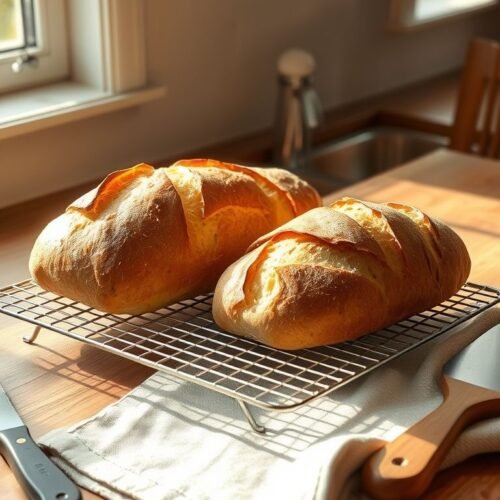
Soft Fluffy French Bread Recipe: The Only Recipe You’ll Ever Need
Ingredients
- 2 ¼ teaspoons (1 packet) active dry yeast
- 2 ½ cups warm water (about 110°F/45°C)
- 2 tablespoons granulated sugar
- 1 tablespoon salt
- 2 tablespoons vegetable oil (or melted butter)
- 6 to 6 ½ cups all-purpose flour
- Optional: 1 egg white + 1 tablespoon water (for egg wash)
Instructions
- 1. Activate the YeastIn a large bowl, mix:2 ½ cups warm water2 tablespoons sugar2 ¼ teaspoons yeast
- 2. Make the DoughAdd:1 tablespoon salt2 tablespoons oil3 cups flour
- 3. Knead the DoughTurn the dough onto a floured surface. Knead by hand for 8–10 minutes (or use a mixer with a dough hook for 5 minutes) until elastic and slightly tacky.
- 4. First RisePlace dough in a greased bowl. Cover with plastic wrap or a towel. Let rise in a warm place for 1 to 1.5 hours, or until doubled.
- 5. Shape the LoavesPunch down the dough. Divide into 2 equal portions. Shape each into a rectangle, then roll tightly into a log. Pinch seams closed and tuck ends under.
- 6. Second RiseCover loosely and let rise again for 30–45 minutes, or until noticeably puffed.
- 7. Preheat OvenPreheat to 375°F (190°C). Place a pan of hot water on the bottom rack for steam.
- 8. Optional Egg WashWhisk 1 egg white with 1 tablespoon water. Brush the tops of the loaves for a golden, glossy crust.
- 9. BakeBake for 25–30 minutes, or until golden brown and the loaves sound hollow when tapped on the bottom.
- 10. Cool and EnjoyLet the bread cool for 20 minutes on a wire rack before slicing for best texture.
Notes
🍞 Tips for Success:
- Use fresh yeast—no foam means your yeast is dead.
- Let your dough rise fully for soft, airy bread.
- For an extra soft crust, brush with melted butter after baking.





